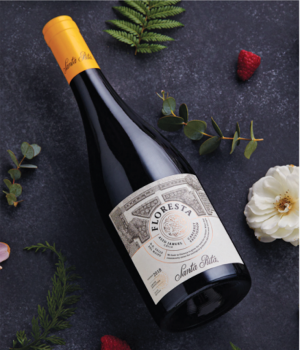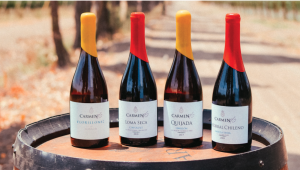Santa Rita and Carmen have quite some pedigree. Santa Rita, founded in 1880, is the top-selling brand in Chile today, and Carmen, founded in 1850, is Chile’s longest-running winery. Despite their impressive historical credentials, the Santa Rita Estates are at the forefront of Chile’s innovative wine scene.
A fresh look with Floresta
Santa Rita boasts a plethora of brands, including the legendary Casa Real, but one of the most innovative is Floresta.
‘We have over 4,000ha of vineyards across the country and Floresta is about taking classical varieties with a totally different approach,’ explains winemaker Sebastián Labbé. ‘Floresta is where we try new wine styles and push the limits.’ The range has five wines today, each distilling a individual vision. From a fresh Cabernet Sauvignon with graphite-like tension grown on unique colluvial soils in Maipo Alto; to a 100-year-old-vine Carmenère re-envisioned with a crunchy red fruit and floral approach; and a peppery Cabernet Franc from a new vineyard Labbé helped plant in coastal Colchagua.

In white wines, the range takes wine drinkers on a journey up to Limarí, Chile’s coastal hotspot for top Chardonnay; and back down to Apalta for a field blend of old vine Semillon, Sauvignon Vert, Moscatel, Torontel and Corinto, from which he makes a unique, slightly amber wine with distinctive personality and savoury flair.
Bringing DOs to the fore
It’s with this same block of Semillon vines that sister winery Carmen is making waves. ‘We’ve worked with growers for many years and the DO range is a line to celebrate the growers, and add value to these old vineyards,’ explains winemaker Emily Faulconer. One of the jewels in the crown is the DO Semillon from Apalta, which is made into two wines: Quijada, a Semillon named after the family of growers, and Florillon, the same Semillon aged under a veil of flor.
Semillon from Apalta is very fleshy with lots of volume – the flor ageing makes it much leaner, fresher, even salty. It’s a wine that has garnered much critical praise and spurred a trend towards flor-aged white wines in Chile. The other two DO wines – Matorral Chileno, a field blend of Carignan, Grenache and País, and Loma Seca, a Cinsault – are both from old vines in Itata. Not only do they show the enormous potential of these old vines in southern Chile but also embrace a thrilling direction for Chile’s wines: vibrant, juicy and with a purity of place.






